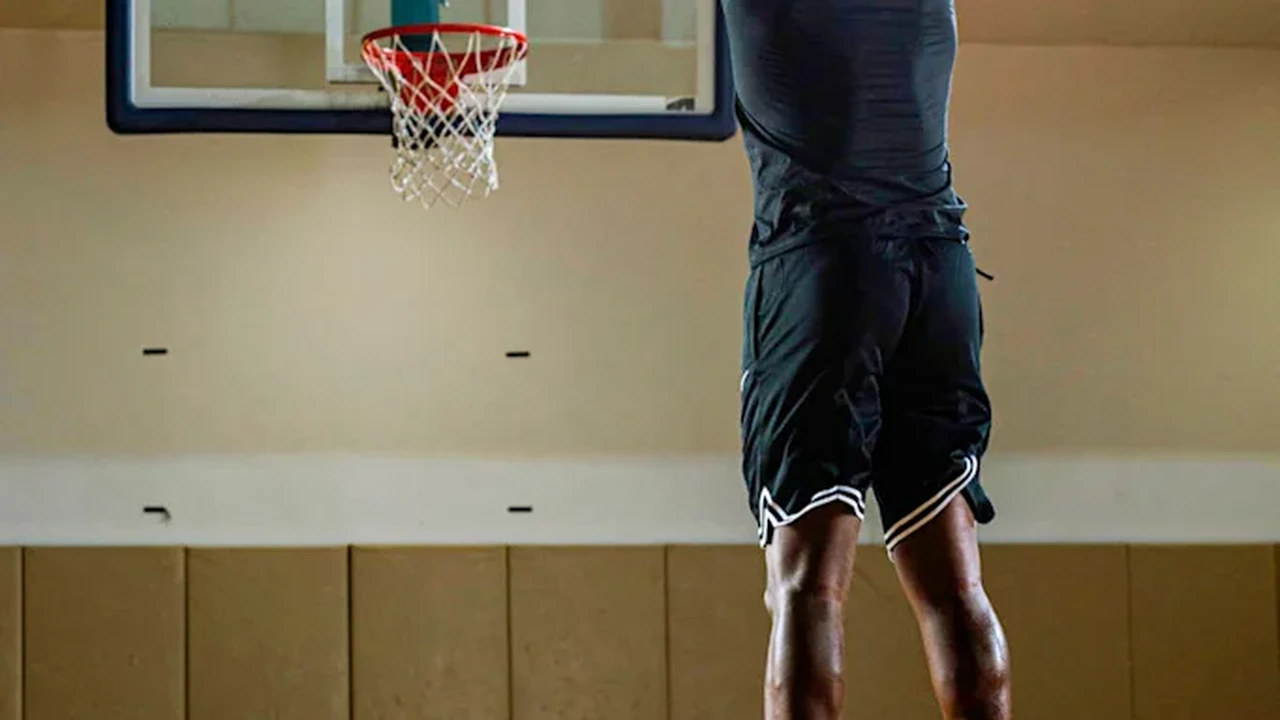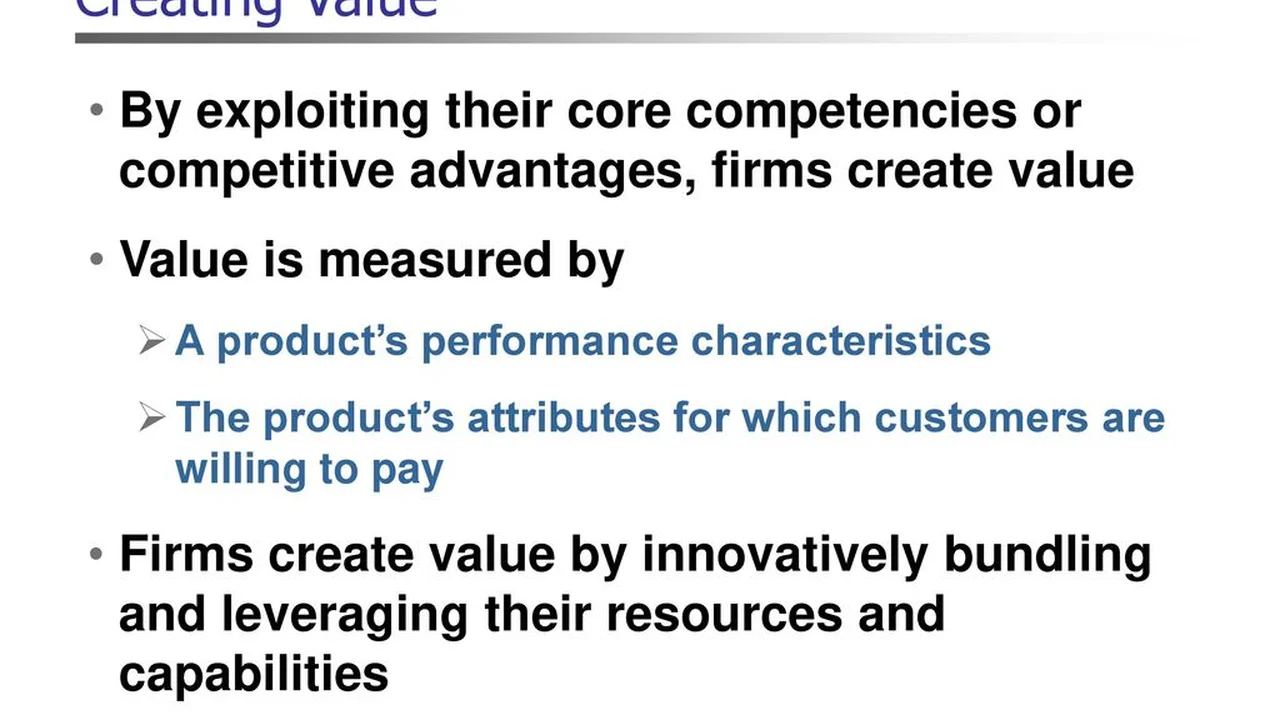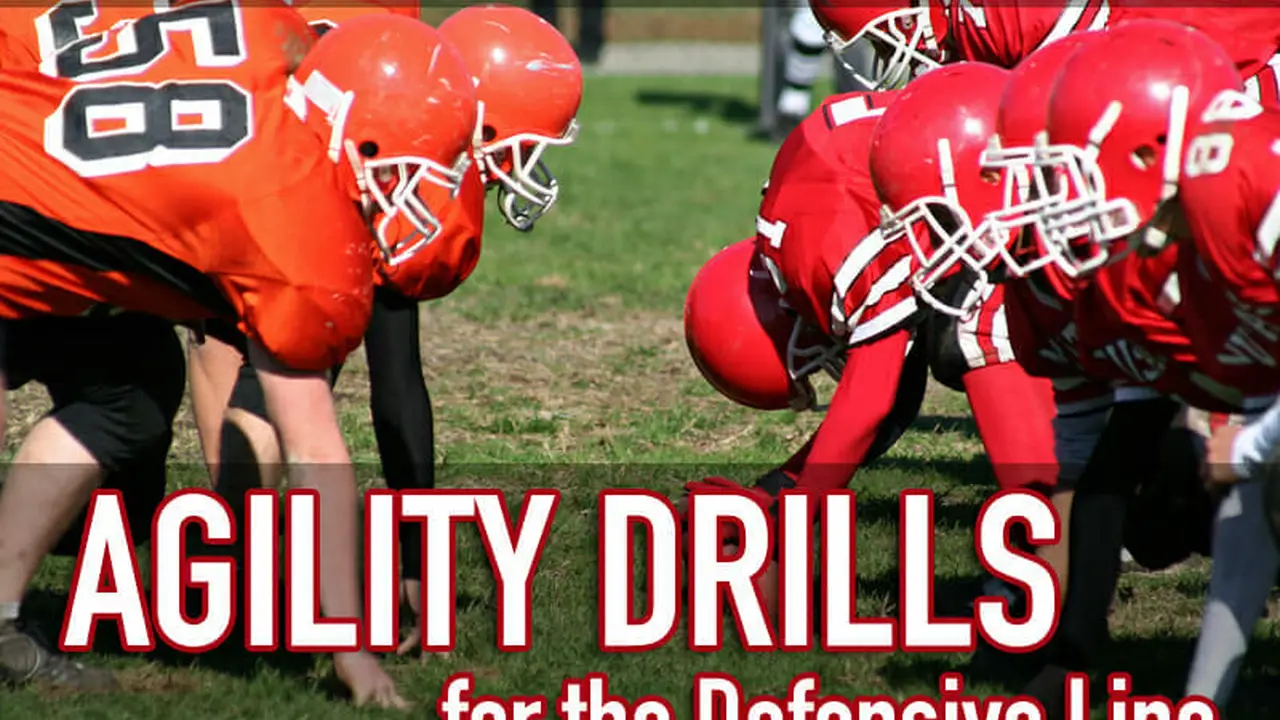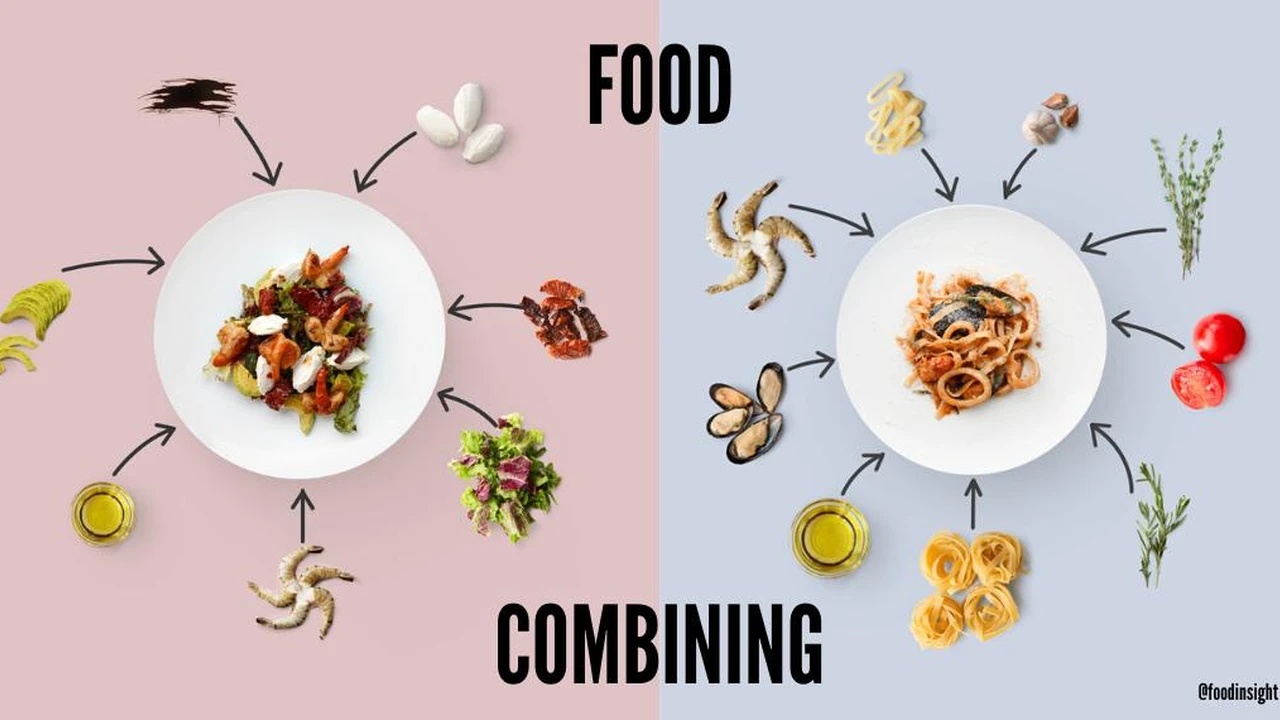Catch and Shoot_ Quick Release Techniques
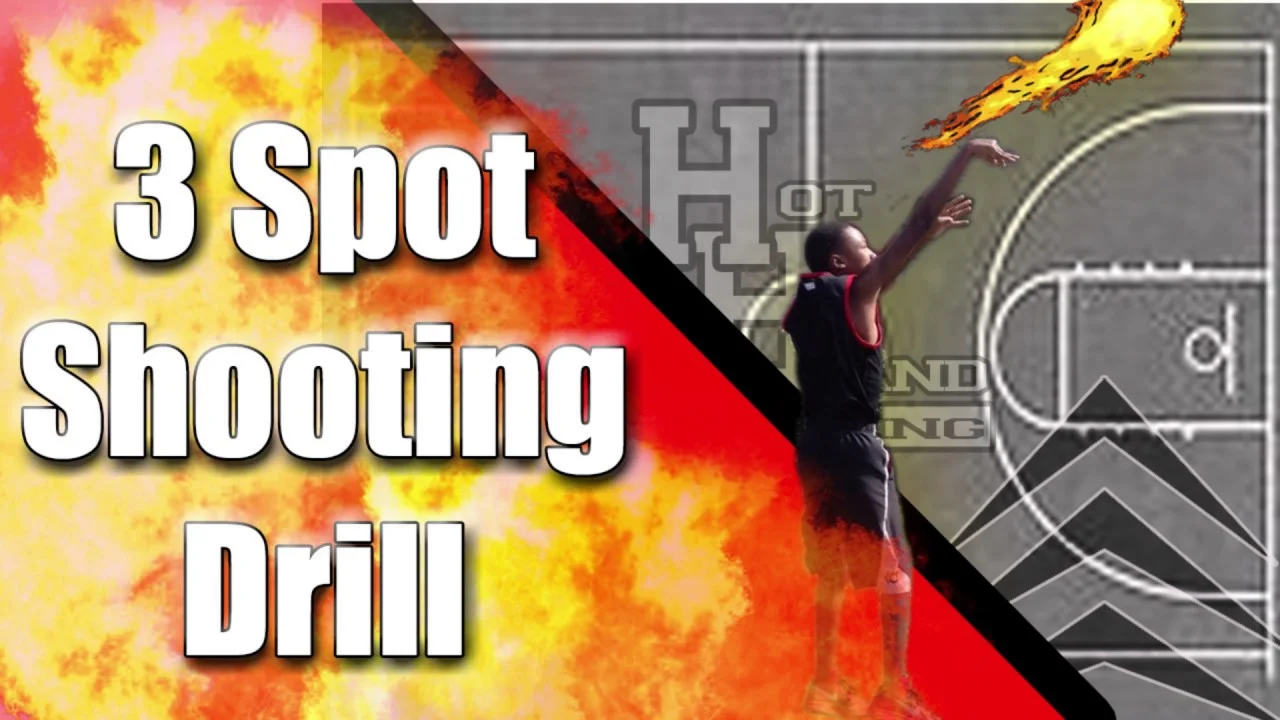
Understanding the Fundamentals of Shooting Techniques
So, you want to elevate your shooting game? It all starts with understanding the fundamentals. We're talking about the core principles that underpin every successful jump shot, from the ground up. Forget the fancy moves for now; let's solidify your foundation.
First, **balance**. A stable base is crucial. Your feet should be shoulder-width apart, slightly staggered, with your weight evenly distributed. Think of it as planting roots before launching a rocket. This stability allows for a consistent release point and minimizes unnecessary movement.
Next, **grip**. How you hold the ball matters. Use your fingertips, not your palms. A proper grip allows for better control and a cleaner release. Imagine holding a delicate bird – firm enough to control, but gentle enough not to crush it. Experiment with different grip pressures to find what feels most natural and gives you the best control.
Then, **stance**. A proper stance sets the stage for a fluid motion. Your knees should be slightly bent, creating a spring-like coil ready to unleash. This bend allows for explosive power and contributes to upward momentum. Keep your back straight and your core engaged for added stability.
Finally, **eyes on the target**. This seems obvious, but it's easily overlooked. Lock your eyes on the front of the rim or the back of the net. Visualize the ball arcing through the air and sinking perfectly. This mental imagery can significantly improve your accuracy.
These fundamentals are the building blocks of a great jump shot. Master them, and you'll be well on your way to becoming a more consistent and confident shooter.
Developing Proper Shooting Form and Technique
Okay, we've laid the foundation. Now, let's talk about form. Form is the choreography of your jump shot – the sequence of movements that lead to a successful release. A consistent form is key to consistent results.
Let's break it down, step-by-step.
1. **The Dip:** As you gather the ball, dip your knees slightly. This is where you generate power. Think of it as loading a spring. The deeper the dip, the more potential power you have, but don't overdo it. Find a comfortable depth that allows for a smooth transition into the next phase.
2. **The Rise:** As you rise, extend your legs and push off the ground. This upward motion provides the necessary lift for your shot. Keep your back straight and your core engaged to maintain balance and stability.
3. **The Release:** As you reach the peak of your jump, extend your shooting arm fully. The ball should roll off your fingertips, creating backspin. Backspin is crucial for a soft landing and increases your chances of the ball dropping through the net. Your guide hand should remain relaxed and should not interfere with the release.
4. **The Follow-Through:** After releasing the ball, fully extend your shooting arm and snap your wrist. This follow-through ensures a consistent release and promotes backspin. Hold your follow-through until the ball reaches the hoop. This helps you visualize the shot and reinforces proper form.
Each of these steps is crucial to a successful jump shot. Practice them diligently, and you'll develop a form that is both efficient and effective. Remember, consistency is key. The more consistent your form, the more consistent your results will be.
Essential Shooting Drills to Improve Accuracy and Consistency
Alright, enough theory. Let's get practical. Drills are the key to transforming theoretical knowledge into practical skill. These drills will help you ingrain proper form and develop muscle memory, leading to improved accuracy and consistency on the court.
Here are a few essential shooting drills to get you started:
1. **Form Shooting Drill:** This drill focuses on perfecting your shooting form. Stand close to the basket (about 5 feet away) and focus solely on your form. Forget about making the shot; concentrate on executing each step of the process correctly. Start with one-handed shots, then progress to two-handed shots. Aim for 100 repetitions per session.
2. **Spot Shooting Drill:** This drill focuses on improving your accuracy from different spots on the court. Choose five spots around the perimeter (e.g., free throw line, elbow, wing, top of the key). Shoot five shots from each spot, then move to the next. Track your makes and misses to identify your strengths and weaknesses. Aim for at least three rounds of shooting from each spot.
3. **Free Throw Drill:** Free throws are crucial in close games. This drill focuses on improving your free throw percentage. Practice your pre-shot routine, focusing on your breathing and visualization. Shoot 10 free throws in a row, then repeat. Track your percentage and strive to improve each session.
4. **Catch and Shoot Drill:** This drill simulates game-like situations where you receive a pass and immediately shoot. Have a partner pass you the ball from different angles and distances. Focus on catching the ball in a shooting-ready position and releasing it quickly and accurately. Aim for at least 50 repetitions per session.
5. **Around the World Drill:** This drill combines accuracy and endurance. Start at the free throw line and shoot a shot. If you make it, move to the next spot around the perimeter (e.g., elbow, wing, corner). If you miss, you have to run a lap around the court before continuing. The goal is to make a shot from each spot without missing, completing the "world tour."
Remember to focus on quality over quantity. It's better to perform a few repetitions with perfect form than to rush through many repetitions with poor form. Be patient, persistent, and consistent with your practice, and you'll see significant improvements in your shooting ability.
Advanced Shooting Techniques for the Elite Player
So, you've mastered the fundamentals and honed your form. Now, let's explore some advanced shooting techniques that can take your game to the next level. These techniques require a high level of skill and coordination, but they can be incredibly effective in creating scoring opportunities.
1. **Fadeaway Jump Shot:** The fadeaway is a jump shot where you lean backwards as you release the ball. This creates separation from the defender and makes it more difficult for them to contest your shot. It requires excellent balance and body control. Practice fading back at different angles and distances to develop your versatility.
2. **Step-Back Jump Shot:** The step-back is a move where you dribble towards the defender, then take a step back to create space for a jump shot. This move is particularly effective against aggressive defenders who are playing tight defense. It requires quick footwork and a confident release. Practice stepping back in different directions and at different speeds to become unpredictable.
3. **Pull-Up Jump Shot:** The pull-up is a jump shot taken off the dribble. This move is often used in transition or when attacking the basket. It requires excellent ball-handling skills and the ability to stop quickly and smoothly. Practice pulling up from different distances and angles to become a scoring threat from anywhere on the court.
4. **One-Dribble Pull-Up Jump Shot:** This is a variation of the pull-up jump shot, but you only take one dribble before shooting. This move is quicker and more efficient than the traditional pull-up, making it ideal for creating quick scoring opportunities. It requires even greater ball-handling skills and the ability to react quickly to the defender's movements.
5. **Hesitation Dribble into Jump Shot:** The hesitation dribble is a deceptive move where you momentarily pause your dribble to freeze the defender before driving or shooting. This move can create just enough space for a clean jump shot. It requires excellent timing and the ability to read the defender's reactions. Practice incorporating the hesitation dribble into your shooting routine to become a more unpredictable and effective scorer.
These advanced techniques are not easy to master, but they can be incredibly rewarding. Practice them diligently and strategically, and you'll become a more versatile and dangerous scorer on the court.
Shooting Equipment Reviews and Recommendations
Alright, let's talk gear. While skill and practice are paramount, having the right equipment can definitely enhance your shooting performance. We're not talking about magic wands, but quality equipment can provide comfort, support, and improved feel for the ball.
Basketball Recommendations: Spalding NBA Zi/O Excel vs Wilson Evolution Game Basketball
Choosing the right basketball is crucial. Two popular options are the Spalding NBA Zi/O Excel and the Wilson Evolution Game Basketball. Let's break down the differences:
Spalding NBA Zi/O Excel
Pros:
- Excellent grip and feel due to its composite leather cover.
- Durable and can withstand both indoor and outdoor use.
- Official ball of the NBA, providing a professional feel.
- Good bounce and responsiveness.
Cons:
- Can be a bit pricey compared to other basketballs.
- Some users find the grip too sticky initially.
Use Cases: Ideal for serious players who want a high-quality basketball for both practice and games. Great for indoor and outdoor use.
Pricing: Typically ranges from $30 to $50.
Wilson Evolution Game Basketball
Pros:
- Incredibly soft feel and grip, making it comfortable to handle.
- Excellent for indoor use due to its soft composite leather cover.
- Consistent bounce and responsiveness.
- Highly rated by players of all skill levels.
Cons:
- Not as durable for outdoor use as the Spalding Zi/O Excel.
- Can be a bit more expensive than the Spalding.
Use Cases: Ideal for indoor games and practices. Perfect for players who prioritize a soft feel and excellent grip.
Pricing: Typically ranges from $50 to $70.
Comparison: The Spalding Zi/O Excel is a more versatile option for both indoor and outdoor use, while the Wilson Evolution is better suited for indoor games due to its softer feel. Choose based on your primary playing environment and personal preference for grip and feel.
Shooting Sleeve Recommendations: Nike Pro Elite Sleeve vs Adidas Alphaskin Shooting Sleeve
Shooting sleeves can provide compression, warmth, and a psychological edge. Let's compare two popular options:
Nike Pro Elite Sleeve
Pros:
- Provides excellent compression and support for the shooting arm.
- Helps to keep muscles warm and loose.
- Made with sweat-wicking fabric to keep you dry and comfortable.
- Stylish design with the Nike logo.
Cons:
- Can be a bit tight for some users.
- May require some adjustment during gameplay.
Use Cases: Ideal for players who want extra compression and support for their shooting arm. Great for keeping muscles warm during practices and games.
Pricing: Typically ranges from $20 to $30.
Adidas Alphaskin Shooting Sleeve
Pros:
- Provides a comfortable and supportive fit.
- Made with breathable fabric to keep you cool and dry.
- Offers a wide range of sizes to ensure a perfect fit.
- Durable and long-lasting.
Cons:
- May not provide as much compression as the Nike Pro Elite Sleeve.
- Some users may prefer a tighter fit.
Use Cases: Ideal for players who want a comfortable and breathable shooting sleeve. Great for practices and games in warm weather.
Pricing: Typically ranges from $15 to $25.
Comparison: The Nike Pro Elite Sleeve offers more compression, while the Adidas Alphaskin Sleeve provides a more comfortable and breathable fit. Choose based on your personal preference for compression and breathability.
Shooting Machine Recommendations: Dr Dish Home vs The Gun 6000
For serious players looking to maximize their practice time, a shooting machine can be a game-changer. Here's a look at two options at different price points:
Dr Dish Home
Pros:
- Relatively affordable compared to professional-grade machines.
- Provides automatic ball return, allowing for continuous shooting practice.
- Offers adjustable settings for different shooting drills and skill levels.
- Connects to an app for tracking progress and accessing training programs.
- Relatively compact and easy to store.
Cons:
- Not as robust or feature-rich as professional-grade machines.
- May not be suitable for high-volume shooting or advanced training programs.
Use Cases: Ideal for home use and individual training. Great for players of all skill levels who want to improve their shooting accuracy and consistency.
Pricing: Typically ranges from $3,000 to $5,000.
The Gun 6000
Pros:
- Professional-grade shooting machine used by NBA teams and colleges.
- Offers a wide range of adjustable settings and advanced features.
- Provides accurate and consistent ball delivery.
- Can track shooting statistics and provide detailed performance analysis.
- Highly durable and reliable.
Cons:
- Very expensive compared to home-use machines.
- Requires a large space for operation.
- May be overkill for casual players.
Use Cases: Ideal for professional training facilities, colleges, and high-level basketball programs. Great for players who want to maximize their shooting potential and receive detailed performance feedback.
Pricing: Typically ranges from $8,000 to $12,000+.
Comparison: The Dr Dish Home is a more affordable and practical option for home use, while The Gun 6000 is a professional-grade machine designed for high-level training environments. Choose based on your budget, training goals, and available space.
Remember to do your research and read reviews before purchasing any shooting equipment. The right gear can enhance your training and help you reach your full potential.
Analyzing NBA Shooting Styles and Techniques
One of the best ways to improve your own shooting is to study the techniques of the pros. Let's analyze the shooting styles of some of the NBA's greatest shooters:
Stephen Curry: The Unorthodox Genius
Stephen Curry's shooting form is often described as "unorthodox," but it's undeniably effective. His key characteristics include:
- Quick Release: Curry has one of the quickest releases in the NBA, allowing him to get his shot off even against tight defense.
- High Release Point: He releases the ball high above his head, making it difficult for defenders to block his shot.
- Deep Range: Curry is known for his ability to shoot accurately from well beyond the three-point line.
- Off-Balance Shots: He's comfortable shooting off-balance and in awkward positions.
Key Takeaways: Focus on developing a quick release and a high release point. Practice shooting from different distances and angles to expand your range.
Klay Thompson: The Textbook Shooter
Klay Thompson's shooting form is often described as "textbook" perfect. His key characteristics include:
- Perfect Form: Thompson's shooting form is technically sound, with a smooth and fluid motion.
- Consistent Release: He releases the ball at the same point every time, ensuring consistency.
- High Arc: Thompson's shots have a high arc, increasing the chances of the ball dropping through the net.
- Excellent Footwork: He has excellent footwork and is always in a balanced position when he shoots.
Key Takeaways: Focus on developing a technically sound shooting form. Practice your release point and arc to improve consistency.
LeBron James: The Power Shooter
While not primarily known as a shooter, LeBron James has significantly improved his shooting over the course of his career. His key characteristics include:
- Strong Base: James has a strong base and uses his legs to generate power.
- High Follow-Through: He has a high follow-through, ensuring a consistent release.
- Improved Range: James has steadily improved his three-point shooting percentage over the years.
- Confidence: He shoots with confidence, even in high-pressure situations.
Key Takeaways: Focus on developing a strong base and using your legs to generate power. Practice your follow-through and shoot with confidence.
By studying the shooting styles of these NBA stars, you can gain valuable insights into different techniques and approaches. Experiment with different elements of their styles to find what works best for you.
Mental Toughness Training for Shooters
Shooting is as much a mental game as it is a physical one. Developing mental toughness is crucial for performing under pressure and overcoming slumps. Let's explore some mental toughness training techniques:
Visualization Techniques
Visualization involves creating mental images of yourself successfully executing shots. This can help to improve your confidence and performance. Here's how to practice visualization:
- Find a Quiet Place: Find a quiet place where you can relax and focus.
- Close Your Eyes: Close your eyes and take a few deep breaths.
- Visualize Success: Visualize yourself making shots from different spots on the court.
- Feel the Emotion: Imagine the feeling of the ball swishing through the net.
- Repeat Regularly: Practice visualization regularly, especially before games and practices.
Positive Self-Talk
Positive self-talk involves replacing negative thoughts with positive affirmations. This can help to boost your confidence and maintain a positive attitude. Here's how to practice positive self-talk:
- Identify Negative Thoughts: Identify negative thoughts that you have about your shooting.
- Replace Negative Thoughts: Replace those negative thoughts with positive affirmations. For example, instead of thinking "I'm going to miss this shot," think "I'm a great shooter and I'm going to make this shot."
- Repeat Affirmations: Repeat these affirmations regularly, especially when you're feeling doubt or anxiety.
Dealing with Pressure
Pressure can negatively impact your shooting performance. Here are some techniques for dealing with pressure:
- Focus on the Process: Focus on the process of shooting, rather than the outcome.
- Control What You Can Control: Focus on controlling what you can control, such as your form and your effort.
- Breathe Deeply: Take deep breaths to calm your nerves.
- Trust Your Training: Trust in the training that you've put in.
Overcoming Slumps
Every shooter experiences slumps from time to time. Here are some tips for overcoming slumps:
- Don't Panic: Don't panic when you start missing shots.
- Focus on the Fundamentals: Go back to the fundamentals of shooting.
- Practice More: Increase your practice time and focus on improving your form.
- Seek Feedback: Ask a coach or teammate for feedback on your shooting.
- Stay Positive: Maintain a positive attitude and believe that you will get out of the slump.
Developing mental toughness is an ongoing process. Be patient, persistent, and consistent with your training, and you'll become a more resilient and confident shooter.
Nutrition and Conditioning for Optimal Shooting Performance
Proper nutrition and conditioning are essential for optimal shooting performance. Let's explore some key aspects of nutrition and conditioning for shooters:
Nutrition for Shooters
- Hydration: Stay hydrated by drinking plenty of water throughout the day.
- Balanced Diet: Eat a balanced diet that includes plenty of fruits, vegetables, whole grains, and lean protein.
- Pre-Game Meal: Eat a light and easily digestible meal 2-3 hours before games.
- Post-Game Recovery: Replenish your glycogen stores by eating carbohydrates and protein after games.
- Avoid Processed Foods: Limit your intake of processed foods, sugary drinks, and unhealthy fats.
Conditioning for Shooters
- Strength Training: Strength training can help to improve your power and explosiveness. Focus on exercises that target your legs, core, and upper body.
- Cardiovascular Training: Cardiovascular training can help to improve your endurance and stamina. Focus on activities such as running, swimming, and cycling.
- Flexibility Training: Flexibility training can help to improve your range of motion and prevent injuries. Focus on stretching exercises that target your legs, hips, and shoulders.
- Agility Training: Agility training can help to improve your quickness and coordination. Focus on drills that involve changing direction and reacting quickly.
Sample Workout Routine for Shooters
Here's a sample workout routine that incorporates strength training, cardiovascular training, and flexibility training:
- Warm-Up: 5-10 minutes of light cardio and dynamic stretching.
- Strength Training:
- Squats: 3 sets of 8-12 repetitions
- Lunges: 3 sets of 10-15 repetitions per leg
- Push-Ups: 3 sets of as many repetitions as possible
- Pull-Ups: 3 sets of as many repetitions as possible (or assisted pull-ups)
- Core Exercises: 3 sets of 15-20 repetitions (e.g., planks, crunches, Russian twists)
- Cardiovascular Training: 30-45 minutes of moderate-intensity cardio (e.g., running, swimming, cycling).
- Cool-Down: 5-10 minutes of static stretching.
Remember to consult with a healthcare professional or certified trainer before starting any new workout routine.
The Importance of Consistent Practice
Ultimately, the key to becoming a great shooter is consistent practice. There are no shortcuts or magic formulas. It takes dedication, hard work, and a commitment to continuous improvement.
Here are some tips for making your practice more effective:
- Set Goals: Set specific and measurable goals for your practice sessions.
- Track Progress: Track your progress and monitor your improvements.
- Focus on Quality: Focus on quality over quantity. It's better to perform a few repetitions with perfect form than to rush through many repetitions with poor form.
- Vary Your Drills: Vary your drills to keep your practice challenging and engaging.
- Get Feedback: Ask a coach or teammate for feedback on your shooting.
- Stay Positive: Maintain a positive attitude and believe that you can achieve your goals.
By following these tips and committing to consistent practice, you can unlock your full shooting potential and become a valuable asset to your team.
:max_bytes(150000):strip_icc()/277019-baked-pork-chops-with-cream-of-mushroom-soup-DDMFS-beauty-4x3-BG-7505-5762b731cf30447d9cbbbbbf387beafa.jpg)



